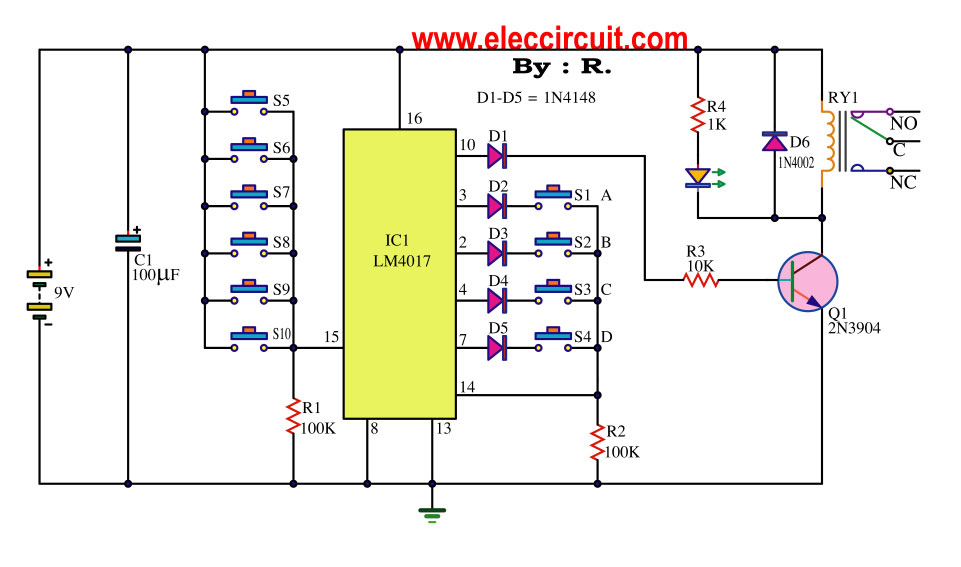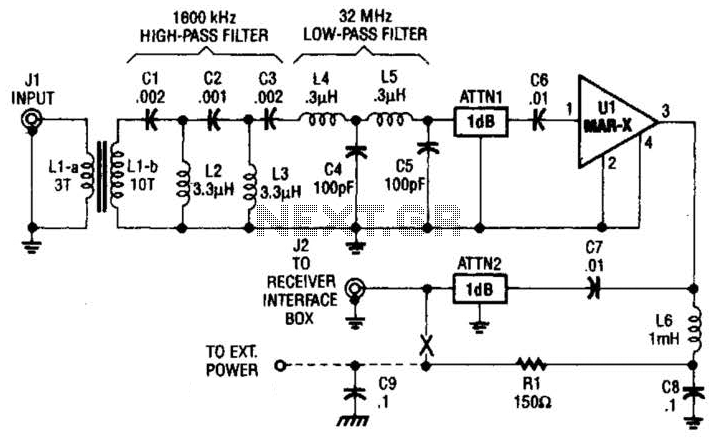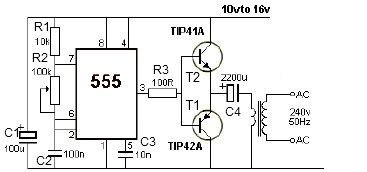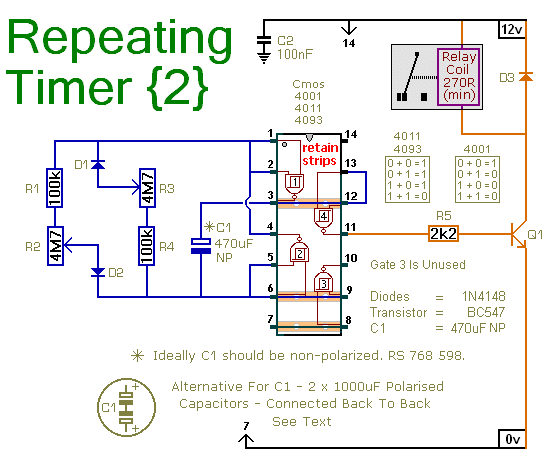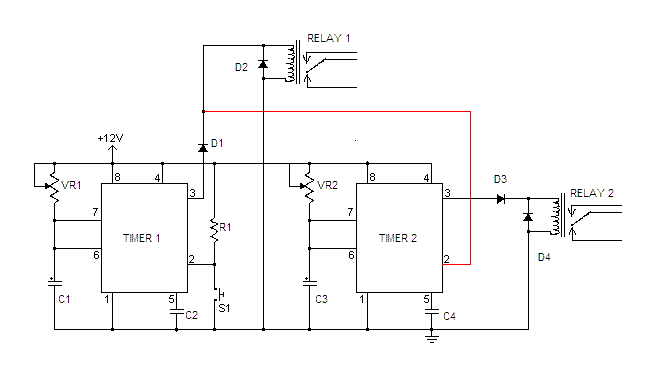
555 pulse timer circuit diagram basic
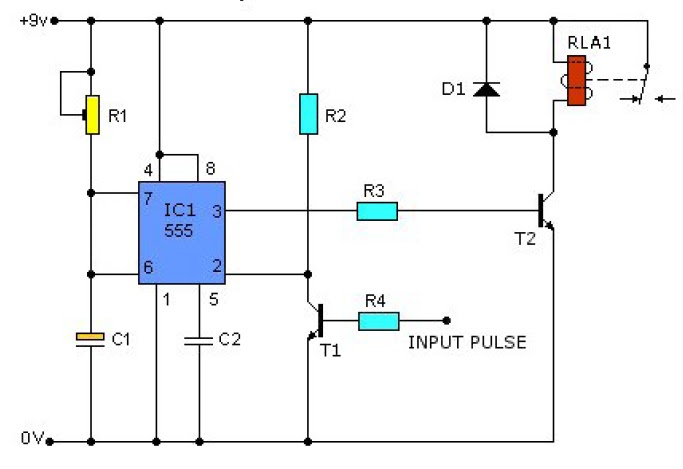
This causes T1 to conduct, pulling pin 2 of IC1 low. IC1 then enters a timing cycle, the duration of which is set by R1 and C1, resulting in pin 3 of IC1 going high. This action causes T2 to conduct. At the end of the timing cycle, T2 switches off, and the circuit awaits the next pulse to T1. T1 replacements include ECG123AP or NTE123AP (rotate the device 180° to conform with the original lead configuration). T2 replacements include ECG123A or NTE123A.
The circuit described operates using two transistors, T1 and T2, along with an integrated circuit (IC1) that functions as a timer. The operation begins when T1 is activated, which pulls the voltage at pin 2 of IC1 to a low state. This low state triggers IC1 to enter its timing cycle, the duration of which is determined by the resistor R1 and capacitor C1 connected to it. The RC time constant established by these components dictates how long pin 3 of IC1 remains high after T1 is triggered.
Once pin 3 of IC1 goes high, it activates T2, allowing current to flow through it. This action can be used to drive a load or trigger another part of the circuit. After the timing cycle concludes, T2 turns off, halting the current flow until T1 receives another pulse, thus restarting the cycle.
For component replacements, T1 can be substituted with either ECG123AP or NTE123AP transistors, ensuring that the device is rotated 180° to match the original lead configuration. Similarly, T2 can be replaced with ECG123A or NTE123A transistors, maintaining circuit integrity and functionality. The design is straightforward, making it suitable for various applications where timing and control are essential.This causes T1 to conduct, taking pin 2 of IC1 `low`. IC1 then enters a timing cycle, the duration of which is et by R1/C1, causing pin 3 of IC1 to go`high`. This causes T2 to conduct. At the end of the timing cycle T2 switches off, and the circuit waits for the next pulse toT1. T1 replacements: ECG123AP or NTE123AP (Rotate device 180 ° to conform w ith original lead configuration). T2 replacements: ECG123A or NTE123A. 🔗 External reference
The circuit described operates using two transistors, T1 and T2, along with an integrated circuit (IC1) that functions as a timer. The operation begins when T1 is activated, which pulls the voltage at pin 2 of IC1 to a low state. This low state triggers IC1 to enter its timing cycle, the duration of which is determined by the resistor R1 and capacitor C1 connected to it. The RC time constant established by these components dictates how long pin 3 of IC1 remains high after T1 is triggered.
Once pin 3 of IC1 goes high, it activates T2, allowing current to flow through it. This action can be used to drive a load or trigger another part of the circuit. After the timing cycle concludes, T2 turns off, halting the current flow until T1 receives another pulse, thus restarting the cycle.
For component replacements, T1 can be substituted with either ECG123AP or NTE123AP transistors, ensuring that the device is rotated 180° to match the original lead configuration. Similarly, T2 can be replaced with ECG123A or NTE123A transistors, maintaining circuit integrity and functionality. The design is straightforward, making it suitable for various applications where timing and control are essential.This causes T1 to conduct, taking pin 2 of IC1 `low`. IC1 then enters a timing cycle, the duration of which is et by R1/C1, causing pin 3 of IC1 to go`high`. This causes T2 to conduct. At the end of the timing cycle T2 switches off, and the circuit waits for the next pulse toT1. T1 replacements: ECG123AP or NTE123AP (Rotate device 180 ° to conform w ith original lead configuration). T2 replacements: ECG123A or NTE123A. 🔗 External reference
Warning: include(partials/cookie-banner.php): Failed to open stream: Permission denied in /var/www/html/nextgr/view-circuit.php on line 713
Warning: include(): Failed opening 'partials/cookie-banner.php' for inclusion (include_path='.:/usr/share/php') in /var/www/html/nextgr/view-circuit.php on line 713
